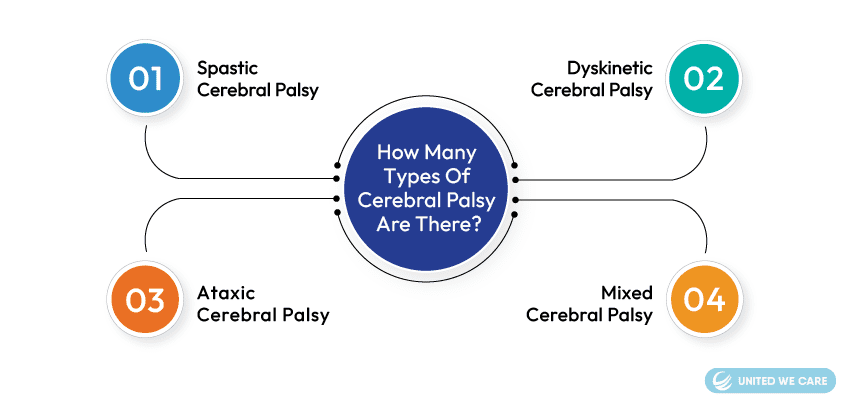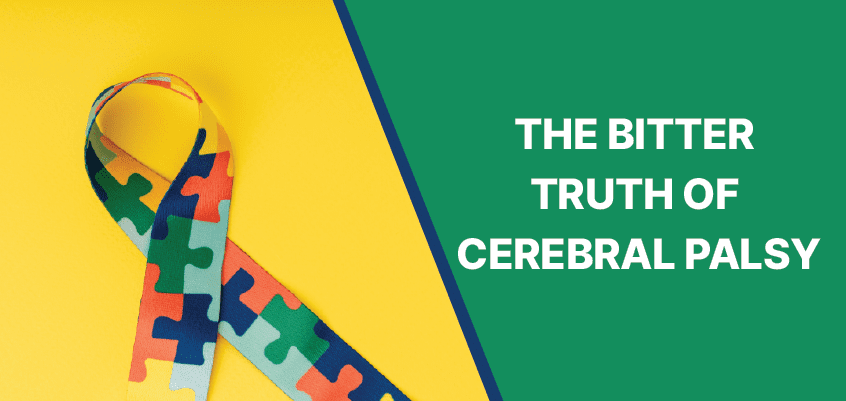Introduction
Cerebral palsy is a disorder that affects muscle tone, movement, and coordination. It results from brain damage during pregnancy or shortly after birth and can cause lifelong difficulties with posture, balance, and movement control. It is the leading disability among children in the US, with symptoms ranging from mild to severe, requiring specialized equipment and lifelong care. However, the condition is not degenerative, and some symptoms may improve over time.
Cerebral palsy has no cure, but treatments, medications, and surgeries can help improve a person’s motor skills and communication ability.
Recognizing The Symptoms Of Cerebral Palsy
How CP impacts movement and posture can vary among individuals and change over time, as the symptoms depend on the affected area of the brain. Children with CP may exhibit the following:
- Poor coordination (ataxia) can make it difficult to move properly.
- Stiff or tight muscles (spasticity) can cause strong reflexes and affect movement. Muscles that are too stiff or loose can make it hard to control movements.
- Weakness in an arm or leg can make it difficult to perform specific tasks and walking on toes or with a bent or crossed gait can affect balance and mobility.
- Difficulty in reaching movement milestones and trouble with precise movements like writing or buttoning clothes are common in individuals with cerebral palsy.
Causes Of Cerebral Palsy

Cerebral palsy is a disorder that affects movement and is caused by abnormal development or damage to the brain. It can be present at birth (congenital) or develop after birth (acquired). The causes of congenital cerebral palsy include genetic abnormalities, brain malformations, maternal infections, fetal injury, etc. Acquired cerebral palsy can be caused by brain damage early in life, diseases, blood flow problems, head injury, and more.
- Brain damage: Different types of brain damage can cause cerebral palsy, such as damage to the brain’s white matter, abnormal brain development, bleeding in the brain, and a severe lack of oxygen.
- Difficult Pregnancy and Labor: Certain medical conditions or events during pregnancy and delivery may increase the risk of cerebral palsy. These include low birth weight and premature birth, multiple births, infections during pregnancy, exposure to toxic substances, and maternal medical conditions like thyroid abnormalities. During labor and delivery, warning signs that may increase the risk of cerebral palsy include breech presentation, complicated work, delivery, early gestational age, jaundice, and seizures. However, not all babies with these warning signs will develop cerebral palsy.
How many Types of Cerebral Palsy are there?

Here’s a simplified breakdown of the types of cerebral palsy:
1. Spastic cerebral palsy:
- Most common type
- Stiff muscles and awkward movements
- Can be further classified into spastic hemiplegia/hemiparesis, spastic diplegia/diparesis and spastic quadriplegia/quadriparesis.
2. Dyskinetic cerebral palsy:
- Characterized by slow and uncontrollable writhing or jerky movements
- Includes athetoid, choreoathetosis, and dystonic cerebral palsies
3. Ataxic cerebral palsy:
- It affects balance and depth perception
- Poor coordination and unsteady walking
4. Mixed cerebral palsy:
- Symptoms don’t correspond to a single type of CP
- A mix of different types of symptoms
Early Stages Of Cerebral Palsy: What To Look For?
Children with cerebral palsy (CP) often experience developmental delays, which means they may take longer to learn basic movements like rolling over, sitting, crawling, or walking. CP can cause decreased muscle tone, making them seem relaxed or floppy, or increased muscle tone, making their bodies feel stiff or rigid. Children with CP may also have unusual postures or favor one side of the body when they move. Parents may notice specific signs in their child at different ages, such as a head lag when picking up a baby under six months old, difficulty rolling over, or crawling crookedly in older babies.
Related Conditions Associated With Cerebral Palsy
Cerebral palsy (CP) can cause many different health problems. About 30-50% of people with CP have an intellectual disability, and half have seizures. Children with cerebral palsy may also experience delayed growth, spinal abnormalities, impaired vision, and hearing difficulties. They may also exhibit speech and language impairments, excessive drooling, and bladder/bowel control issues.
Moreover, some individuals with cerebral palsy may have sensation perception, learning, or intellectual functioning challenges. They may also have dental problems, be inactive, and be at risk of bone fractures. Additionally, some people with CP may experience psychological issues like anxiety and depression.
Diagonozing And Treating Cerebral Palsy
Cerebral palsy (CP) is a condition that affects movement and coordination, caused by damage to the brain during or shortly after birth. Symptoms include muscle weakness or stiffness, abnormal posture, unsteady walking, and difficulty with fine motor control. The severity of the symptoms can vary greatly, ranging from mild to severe.
CP is usually diagnosed in children by age two, but if the symptoms are mild, it may be difficult to diagnose before age 4 or 5. There is no cure for CP, but early intervention can help to improve a child’s capabilities. Treatment usually involves a combination of physical therapy, occupational therapy, speech and language therapy, and drug treatments. Surgery may also be recommended when spasticity and stiffness make mobility and movement painful or difficult. It is important to note that CP is not progressive, and if a child continuously loses motor skills, the problem may be caused by a different condition.
Can Cerebral Palsy Be Prevented?
While cp related to genetic abnormalities cannot be prevented, some risk factors for congenital cerebral palsy can be managed or avoided. For instance, rubella (German measles) is a preventable cause of congenital cp, and women can protect themselves by getting vaccinated before becoming pregnant. Moreover, some acquired cp cases, often caused by head injury, can be prevented by following standard ss using car seats for infants and toddlers. You wish to learn more about cp and connect with an expert, you can use the United We Care (UWC) app.
Conclusion
Cerebral palsy is a complex neurological condition that can profoundly impact individuals and their families. While there is no cure for it, advances in medical and therapeutic interventions have improved outcomes and quality of life. By working closely with healthcare professionals, educators, and caregivers, individuals with it can develop the skills and strategies needed to maximize their potential and participate fully in their communities. With continued research and support, we can strive to improve the lives of those affected by cp and help them achieve their goals and aspirations.
For further help and guidance, you can explore more content at United We Care.
References
[1] Cerebral Palsy Alliance, “Other impairments,” Cerebral Palsy Alliance – Cerebral Palsy Alliance is a non-profit that provides services to thousands of people with a disability and their families. Cerebral palsy (CP) is a physical disability that affects how a person moves, 09-Jan-2013. [Online]. Available here: . [Accessed: 01-May-2023].
[2] “Intelligence and Cerebral Palsy: The facts,” Brown Trial Firm, 14-Jan-2020. [Online]. Available here: . [Accessed: 01-May-2023]











